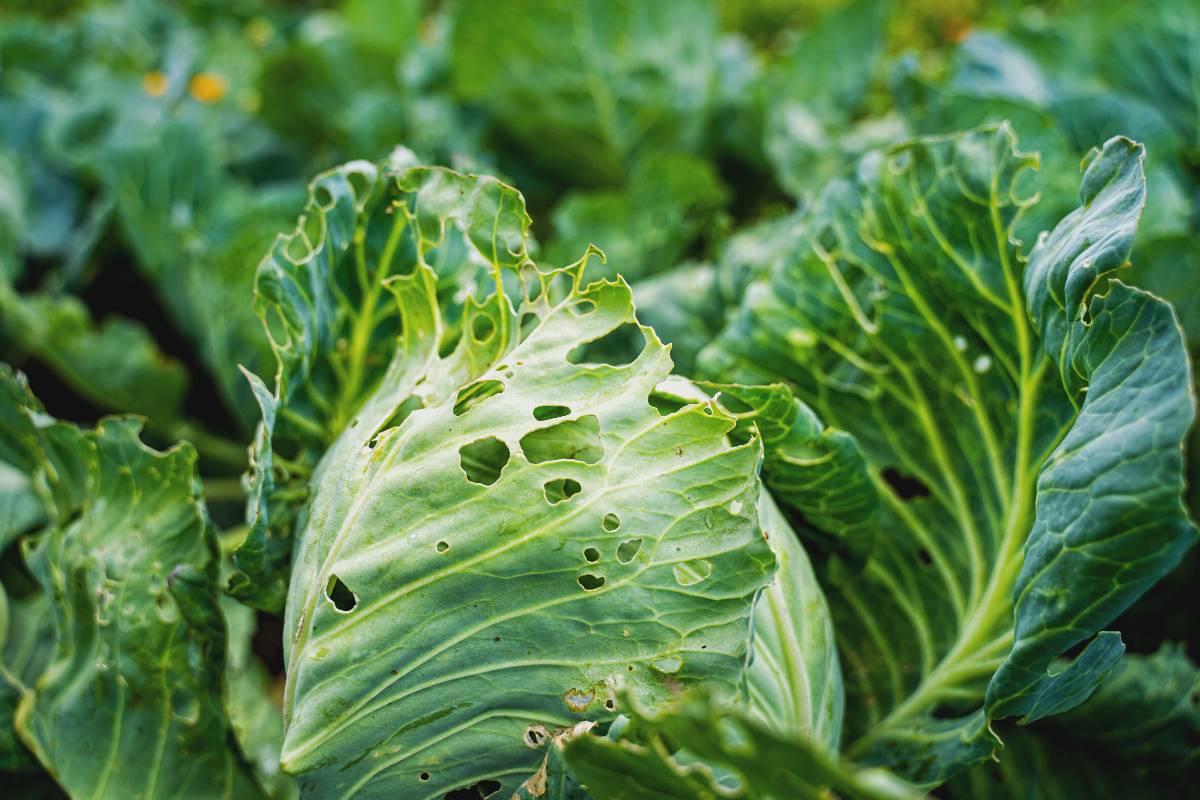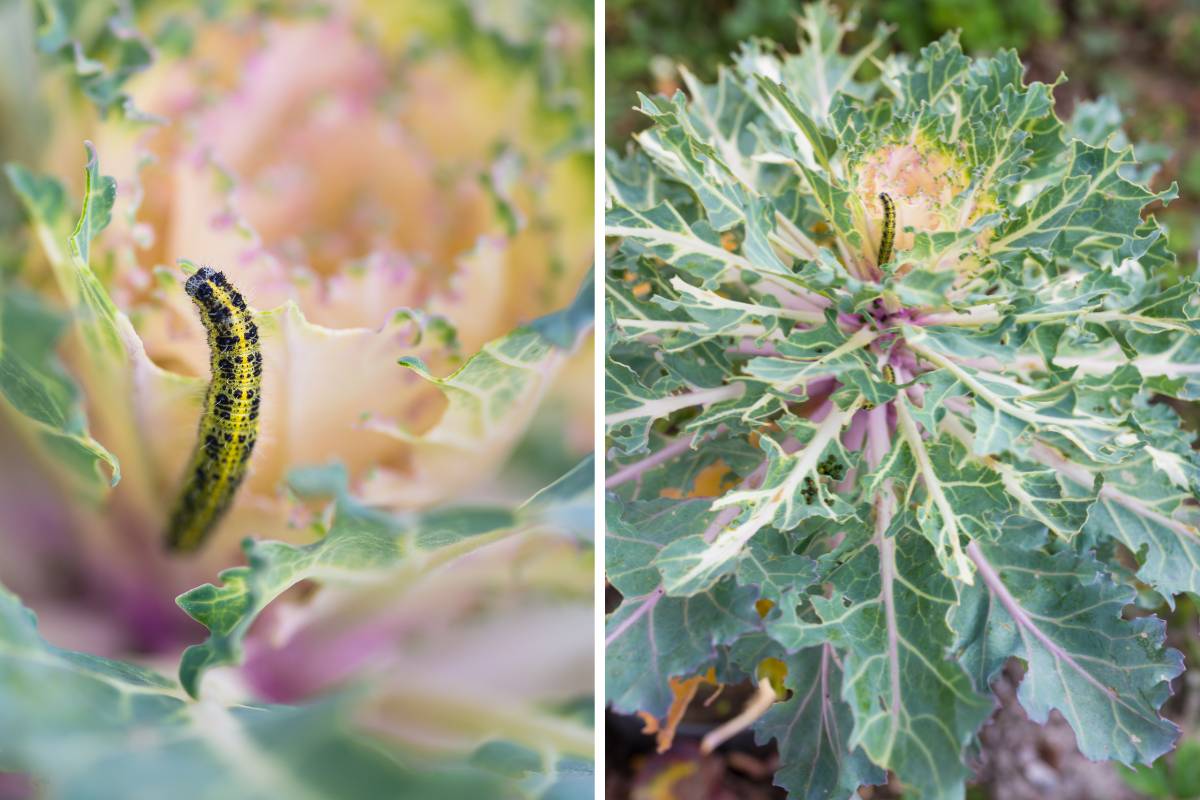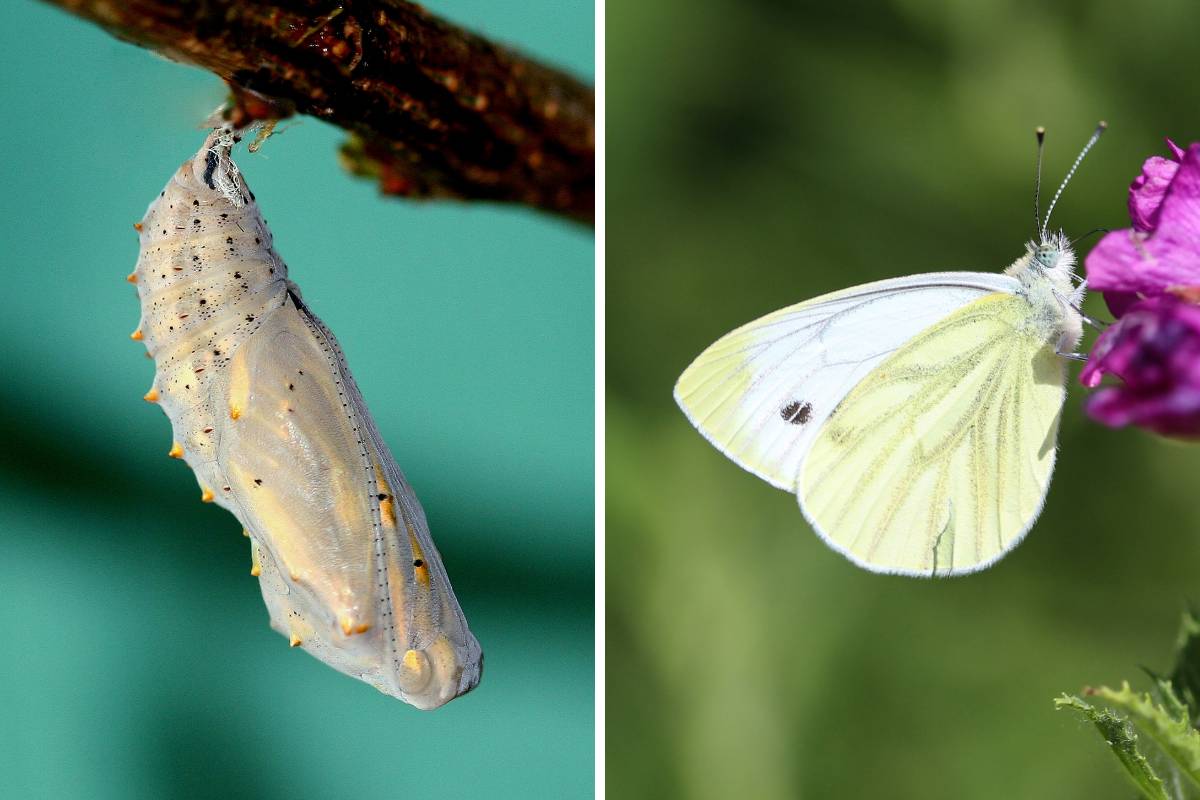Every veggie grower at some point will curse the arrival of a horde of hungry caterpillars laying waste to their precious crops. But while the damage caterpillars can cause is dramatic and unwelcome, reaching for pesticides at first sighting may not be necessary. Without springtime caterpillars, there'd be no butterflies later in the summer - an outcome that few gardeners would welcome.
Caterpillars are the larval stage of butterflies and moths, both members of the botanical order Lepidoptera, and the adults they become are valued for their pollination work and beauty. So when you're faced with a caterpillar infestation, limiting the damage they cause is usually preferable to eradicating the pests completely.
The Caterpillar Life Cycle
There are an estimated 20,000 species of moths and butterflies in Australia, and of these, only around 50 produce caterpillars that do serious damage in a vegetable patch. The large number of species means that the colours and shapes of caterpillars can vary quite widely, making precise identification tricky. However, they all follow the same basic life cycle, which is the easiest way to confirm a caterpillar problem.
An adult moth or butterfly lays eggs singly or in clusters on the underside of leaves, starting in spring and continuing through to autumn. After only a few days, the eggs hatch into soft-bodied, segmented grubs varying in length from 10mm to 30mm. These caterpillars feed voraciously for two to three weeks and then create a cocoon or chrysalis, from which they emerge as adults after between one and three weeks, depending on the species.
Caterpillar Damage
The damage caterpillars cause can be extensive and immediately visible, but it's not always easy to spot the grubs themselves as they're adept at hiding from predators, and sometimes well camoflaged. If you're lucky, you'll spot an infestation during the brief egg stage of the life cycle before the caterpillars emerge and start to feed. Once feeding begins, you might also spot the droppings, or 'frass', which accumulate below the plants the caterpillars are feasting on.
Caterpillars that are classed as pests have a voracious hunger that can virtually kill off your plants in a matter of hours. Generally, they'll eat only the soft leaf tissue, working from the edges inward or making holes, leaving the tougher veins and stems behind as skeletal remains. Total and sudden stripping of a plant is one of the surest signs of a caterpillar infestation.
Controlling Caterpillars
If you see suspected caterpillar damage it's important to decide whether drastic measures are actually necessary before taking any action. A caterpillar or two on a large shrub or tree is unlikely to cause serious harm, and turning a blind eye will help maintain adult moth and butterfly numbers.
Also, ensure that the grubs are genuinely caterpillars and not the larvae of another potentially beneficial insect. One way of identifying caterpillars is that they have six true legs and 10 more minor legs known as prolegs, which most other insect larvae lack.
Nevertheless, a gang of identified caterpillars in the middle of your veggie patch is cause for concern, and swift action is a good idea. Ideally, you can stop things from getting to this stage by laying insect exclusion netting over vulnerable plants to prevent eggs from being laid in the first place, maybe leaving some sacrificial plants uncovered nearby to attract attention instead.
Alternatively, many butterflies and moths are highly territorial and won't lay eggs when other adults are around. Placing butterfly decoys around your veggie beds can discourage egg laying.
But if these measures aren't enough, you can hopefully catch the insects at the egg stage before feeding begins. If so, simply scrape them off the underside of the leaves and squish them into the ground.
Hatched caterpillars can be removed by hand and disposed of in a bucket of water or fed to chickens. However, some species of caterpillar, such as the spitfire, can cause painful stings when touched, so wear gloves as a precaution.
For more serious infestations, two natural insecticides can quickly cure the problem. Dipel is an organic product based around bacteria infecting the caterpillar as it feeds, killing the individual without affecting other bugs or harming the environment. Simply spray on the leaves of infested plants or on likely target plants in advance.
Derris dust is another natural insecticide that's a little less specific and can target other insects, so use it carefully. It's also harmful to fish, so avoid applying it near waterways. But as it's toxic to aphids and other sap-sucking pests, it can be a good one-stop solution for multiple infestations.
And lastly, encouraging birds, beetles, parasitic wasps, and other natural caterpillar predators is an ideal way of keeping the hungry pests in check and boosting the all-around health of your garden's ecosystem.









